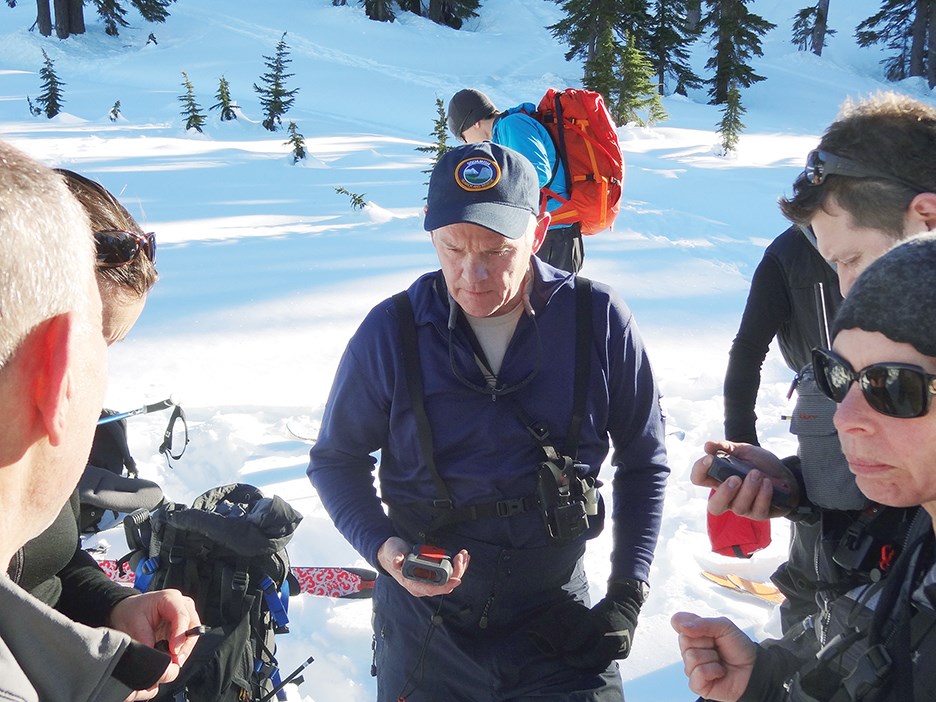When the worst happens on Squamish’s cliffs, trails and lakes, they run to the scene.
For Squamish Search and Rescue (SAR) volunteers and all first responders, there can be an emotional and psychological cost to answering the call when an extreme sport or a fun day out goes wrong.
John Howe, president of Squamish SAR and a member for about 30 years, said fortunately tragic and horrific scenes are not common occurrences for local rescuers; they happen only a few times a year, but when they do, they can rattle some rescuers.
When sent in to a gruesome or deadly scene, first responders are vulnerable to traumatic incident stress, which can manifest in physical, mental and emotional symptoms, according to the Centres for Disease Control and Prevention.
Immediately following a traumatic event, a responder may experience shock. Days later, fatigue and headaches can set in. Mental symptoms of traumatic incident stress can include nightmares and difficulty sleeping. Emotional responses can include prolonged anxiety, guilt and panic that go on for weeks or months.
The possible impact of a scene on SAR members is considered from the moment a call comes in, Howe said.
He said if it is clear the incident will involve a death or a gruesome scene, then managers carefully select the volunteers they send in.
“We try to select people in that group who have been exposed to it before, and we know from the history that they are comfortable with that kind of thing,” he said, adding that a large percentage of rescuers are medical professionals and so have experience in their work lives with death and difficult scenes.
The rescuers in Squamish are a close-knit group, Howe said, which helps when something particularly troubling happens.
“There’s lots of people within our organization who are close friends, in one way or another they kind of all are looking out for each other and aware if people are affected by a particular call,” he said.
The call doesn’t have to be a death or gruesome to be upsetting, however, Howe said. Sometimes it is a very stressful call that has a stronger impact on a member.
“For every call, we debrief,” Howe said. “We all gather together as a group [and discuss] what we did and what we saw.” The SAR manager looks for signs a rescuer is troubled.
“That will trigger us to have a defusing session, so we gather as a group – the people who are directly involved with it – and we will sit down with these diffusers and they go through a protocol of things that help us deal with these unusual situations that we are exposed to.”
Squamish members are part of the umbrella organization British Columbia Search and Rescue Association (BCSARA), which has a group of trained volunteers who specialize in facilitating defusing sessions with rescuers. If an event was particularly stressful or there was a particularly bothersome fatality, then the specialists would be brought in, Howe said.
Individually, members also have access to mental health professionals such as psychologists. “There is no end of resources that we have through the provincial government that we have at our disposal if we need it,” Howe said.
That wasn’t always the case. In the past there was not the level of understanding of the impact of the rescues on members, said Howe. “The recognition that one situation may not be a big deal, but some member who is exposed to three or four and then you are looking at that building up,” he said.
Given the toll an accident can have on SAR members, it is no surprise one of Howe’s first thoughts when he sees some of Squamish’s most extreme sports is of the potential for a difficult rescue.
It boggled his mind when he saw the video of highliner Spencer Seabrooke perform his record-breaking stunt across a slackline at the top of the Stawamus Chief without a safety harness in August, he said. Howe thought about what it would have taken for rescuers to go in, had Seabrooke fallen.
“I know that particular spot. The trouble with that one is it is so deep a canyon that if somebody fell there you would have to actually go in, and you can’t even get a helicopter and a long line because it is so deep.... It is not a pretty thing to be doing, that is for sure.”
Howe said although it’s morbid, people should carry identification, in case the worst happens. “That is the first thing that you have to do is identify them,” he said. “It is a pretty macabre thing to think…. but RCMP, the first thing they’ll do is say we need a positive ID on the body so we can contact next of kin.”
Ultimately, most rescues in Squamish end positively, Howe stressed.



